Lecture1 Introduction and Basic Concepts
一、机器学习定义
二、机器学习算法
- Supervised learning 监督学习
- Unsupervised learning 无监督学习
- Reinforcement learning 强化学习
- Recommender systems 推荐系统
三、课程目的
如何在构建机器学习系统时,选择最好的实践类型决策、节省时间。
四、回归和分类
- Regression回归问题
- Classification分类问题
五、clustering algorithm 聚类算法
视频 1 - 2 - What is Machine Learning_ (7 min)
一、机器学习定义
• Arthur Samuel (1959). Machine Learning: Field of study that gives computers the ability to learn without being explicitly programmed. 机器学习:在进行特定编程的情况下,给予计算机学习能力的领域。
• Tom Mitchell (1998) Well-posed Learning Problem: A computer program is said to learn from experience E with respect to some task T and some performance measure P, if its performance on T, as measured by P, improves with experience E. 卡内基梅隆大学Tom 定义:一个程序被认为能从经验 E 中学习,解决任务 T,达到性能度量值P, 当且仅当,有了经验 E 后,经过 P 评判,程序在处理 T 时的性能有所提升。
二、机器学习算法
1、常用:
(右侧的例子,无监督学习将数据划分为两个集合,也就是聚类clustering algorithm)
2、其他:
Reinforcement learning 强化学习, recommender systems 推荐系统
三、课程目的
If you actually tried to develop a machine learning system, how to make those best practices type decisions about the way in which you build your system. 如何在构建机器学习系统的时候选择最好的实践类型决策,节省时间。
视频 1 - 4 - Unsupervised Learning (14 min)
四、回归和分类
1、Regression回归问题:预测结果是连续的输出值
在历史房价数据的基础上,预测房屋价格。可以使用直线拟合(粉色),也可以使用二次曲线拟合(蓝色)。
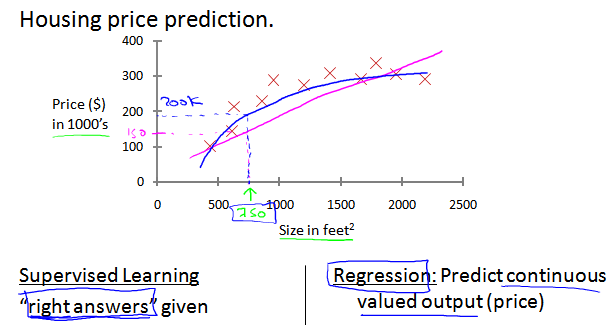
监督学习:基于已有的正确结果。 回归问题:预测连续的输出值
2、Classification分类问题:预测结果是离散的多个值

下图是基于两个特征(两个维度)进行预测的例子, 右边是其他可能维度(维度可能有无穷多个)
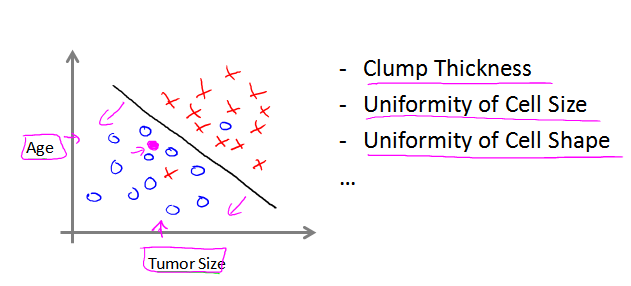
3、区分 “分类问题”和“回归问题”
例题:
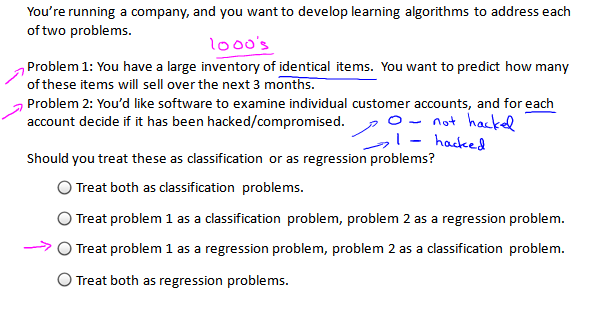
视频 1 - 4 - Unsupervised Learning (14 min)
五、聚类算法clustering algorithm 在现实生活中的应用
Google News 每天将爬来的网址分为一个个的新闻专题。 基因信息分组。组织大型计算机集群。 社交网络的分析。市场分割。天文数据分析
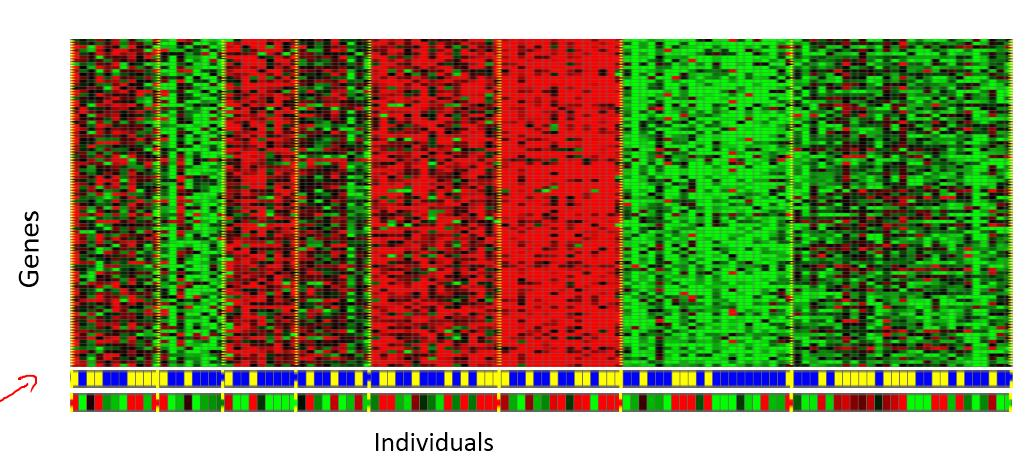
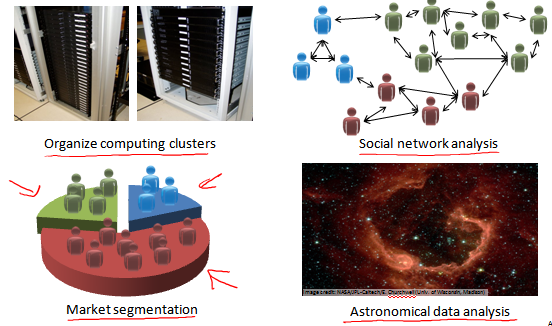
鸡尾酒party问题,将混在一起的多个音频源拆开。

通过这个例子,特别强调了Octave和MATLAB这些软件的简洁之处,这个算法的实现在Octave里只需要一行代码
[W,s,v] = svd((repmat(sum(x.*x,1),size(x,1),1).*x)*x');